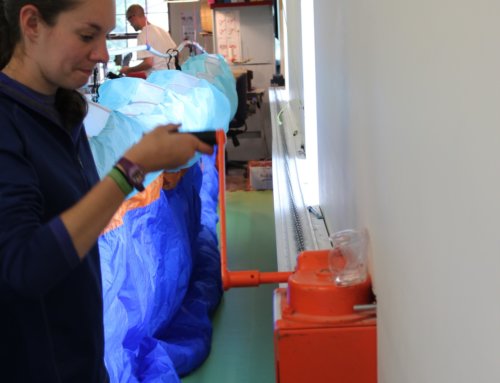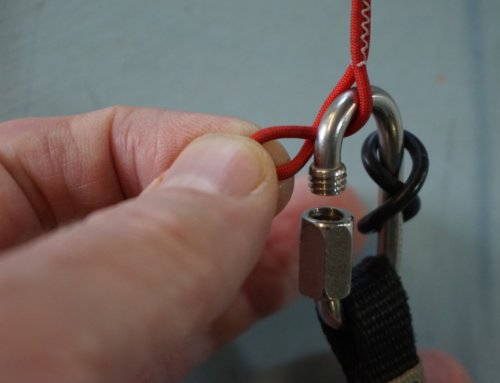So the weather’s getting better and prospects for some good flights are looking brighter. As well as feeling the excitement of spending more time in the air, some of us may be savouring thoughts of getting a new or replacement wing. If part of our thinking is that our “old” wing is no longer up to the job, are we really being fair to the partner to whom we’ve entrusted our life so many times before?
I’m not trying to dissuade anyone from changing their glider if they want to, but rather to encourage clear‑sightedness about your reasons. Maybe selling the idea of a large purchase to your partner would be easier if you could say that you needed a new one to stay safe, but that might not be entirely true. You may have decided to go ahead anyway, but an accurate justification might need to sound a little different.
Passive safety and structural strength of modern wings are certainly much better than they used to be. The introduction of certification has established objective criteria against which nearly all gliders are now assessed. German DHV/LTF standards have been supplanted by the European standard, EN 926, which was introduced more than 20 years ago. Although there have been two revisions to the standard, the primary difference between now and then is that today almost all wings are certified.
Might it be that your glider has become less safe as it has aged? Well, there are two main possibilities here. Through use and exposure to UV, heat and damp, the fabric may have become more porous, reducing the wing’s internal pressure and making collapses more likely. But that’s very easy to check with a porosity meter. [Picture 1] The second possibility is that the lines have weakened to the point that they no longer are strong enough to support the standard 14 times the maximum certified weight limit. That’s also possible, but rare for gliders less than 12 years old. Again, this is straightforward to test as part of a glider service. [Picture 2]
OK – perhaps not less safe now than it was, but the performance isn’t what it used to be: can I make that argument? That may well be true if your glider hasn’t been trimmed in a while. Pretty well all paraglider lines shrink over time, but more importantly, they can shrink at different rates. Kevlar, Dyneema and Vectran all shrink differently. It also seems to be almost universally true that more lightly loaded lines shrink more than heavily loaded ones. Typically that means that a glider’s trim speed gets slower, glide degrades, handling deteriorates, and propensity to collapse or even stall may increase.
The good news (perhaps not so good if you’re looking for a reason to swap) is that once all the lines have been measured, [Picture 3] it’s possible to work out how to retrim a glider back to the manufacturer’s specification. The result can be quite dramatic: going out of trim happens slowly, maybe over a year or more – getting your wing back after a week away for a service, to find it flying like new, can even be disorientating.
But no amount of trim adjustment can make a wing fly better than it did originally. The balance between performance and safety is one struck by the designer, bearing in mind his target pilot group and using the technology available at the time. Every year, manufacturers eke out performance improvements, and whilst most advances are incremental, over time the differences can become significant. In particular, if your glider is more than 5 or 6 years old, this might be a sound reason for making a change. Since around 2012 almost all new designs have relied on rods for structural reinforcement rather than mylar cell walls, and that year was also when Ozone made its shark nose technology available to other manufacturers without charge. These were technological changes that achieved performance improvement without compromising passive safety.
There are lots of other sound reasons for changing your wing. Maybe you want to progress to a wing with significantly greater performance or one with increased passive safety. Maybe you’re just looking for a change from the familiar that you now know only too well. Maybe you just want to treat yourself with something crispy in this year’s colours. But whether you decide to swap wings or stick with your current one, why not do so with a clear view of your real reasons?
Giving your wing a good look over
If you haven’t had your wing out yet since last year, it’s worth making sure that you give it a good look over before your first flight this year. Here are a few things worth considering:
- Open the canopy out and carefully check over to look for damage. That might include small tears and broken stitching. Examine the bottom surface, and then turn it over to check the top surface too.
- Patch any small holes. My rule of thumb is that if the hole is big enough to put your thumb through, maybe it’s not small – perhaps worth getting a second opinion.
- Check your lines for damage. Ideally run every line between your fingers from the maillon to the surface of the wing. If that’s not easy to do for any reason, at least check your main lines.
- Sheathing should be undamaged, and unsheathed lines should not show evidence of broken threads. Stitching at the loops should be unbroken.
- Make sure the maillon gates are closed firmly, but don’t overtighten them. Main line loops should be held in place on the maillon by either inserts or O rings.
Enjoy your flying!
If you want to chat anything through, we’re always happy to offer help and advice over the phone (01433 627195) or by email (info@aerofix.com).



